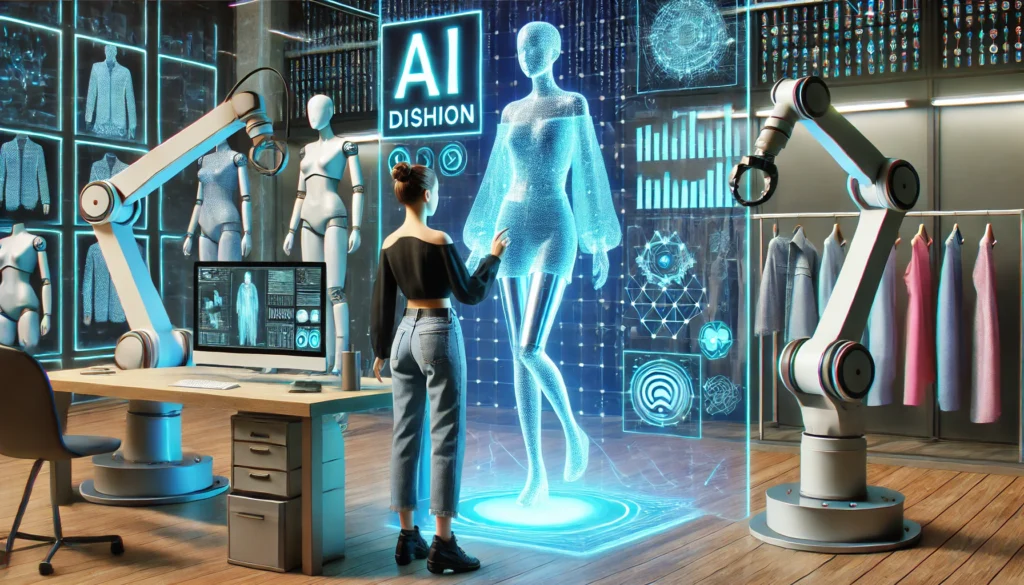AI and Fashion: How Algorithms Are Designing Your Next Outfit
AI is reshaping how we dress. Meanwhile, designers, brands, and consumers embrace algorithms that predict trends, design garments, and even serve as personal stylists. Therefore, it’s time to explore how AI is influencing style in 2025.
1. Trend Prediction in Real Time
Firstly, AI scans social media, runway shows, and retail data.
For example, tools like Heuritech detect emerging patterns in color and silhouette before they hit stores.
Additionally, brands such as Zara and H&M utilize real-time forecasting to minimize overproduction.
Moreover, this data-driven insight replaces guesswork and speeds up fashion cycles.
2. Generative Design & Creative Partnerships
Additionally, AI acts as a design muse.
For instance, platforms like Coven.ai and research-based GAN systems generate original dresses, prints, and textures.
Also, AI can remix historical styles or brand aesthetics into novel fashion concepts.
Therefore, designers receive creative inspiration and rapid prototyping power.
3. Virtual Try-Ons & Fit Tech
Meanwhile, AI-powered virtual fitting rooms are booming.
For example, Google’s Doppl app creates animated previews of how clothes fit on your body.
Also, solutions from companies like GlamAI and NewArc.ai let you digitally try outfits in seconds.
Consequently, customers feel more confident online, and return rates decrease.
4. Hyper-Personalized Styling
AI personal stylists cater to your wardrobe and identity.
For example, apps like Style DNA analyze your selfie to suggest outfits and manage your closet.
Also, AI shopping assistants like Stitch Fix provide curated picks based on your preferences.
Moreover, tools like OneOff generate celebrity-inspired looks powered by ChatGPT and Gemini.
Thus, personal styling is leveling up with tailored recommendations and discovery.
5. Supply Chain & Sustainability
Furthermore, AI plays a huge role in eco-conscious fashion.
For instance, AI-driven demand forecasting and inventory optimization help brands reduce waste.
Also, material analysis and lifecycle monitoring promote recycling and ethical sourcing.
Therefore, sustainability is becoming measurable—and profitable.
6. Fashion in the Metaverse
Moreover, AI builds digital wardrobes for virtual worlds.
For example, generative tools create 3D garments and NFTs for avatar use.
Also, AI 3D modeling supports virtual runways and e-commerce experiences.
Therefore, fashion crosses into digital identity as well as physical.
7. Industry Impact & Innovation
Meanwhile, major brands are integrating AI across operations:
Zara, H&M, and Zara reduce overstock via data insights.
Mango and H&M use AI-generated models in ads, stirring debates.
Fashion schools like RCA are democratizing design with AI tools for emerging talent.
Consequently, AI is expanding both creative and commercial possibilities—while raising ethical questions.
Challenges & Ethical Considerations
However, AI introduces challenges:
Job disruption: AI models may displace designers and traditional models.
Copyright: Who owns an AI-generated design? The brand or the algorithm?
Privacy: Style bots rely on personal data, potentially creating filter bubbles.
Diversity: AI outfits may lack inclusivity or authenticity in representation.
Therefore, transparency and ethical frameworks are essential.
Final Thoughts
AI isn’t just for tech—it’s styling your wardrobe.
By offering trend forecasting, design innovation, virtual try-ons, personalized styling, and sustainable operations, AI transforms fashion end-to-end.
However, meaningful use requires human oversight, ethical design, and data responsibility.
Ultimately, AI enhances creativity and consumer experience—but must be guided by people to remain personal, inclusive, and authentic.
